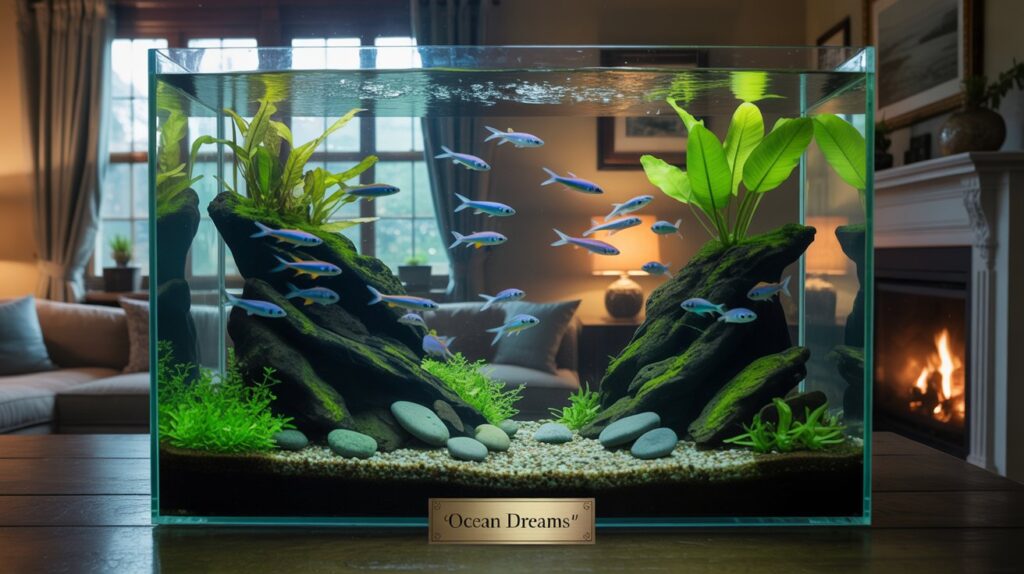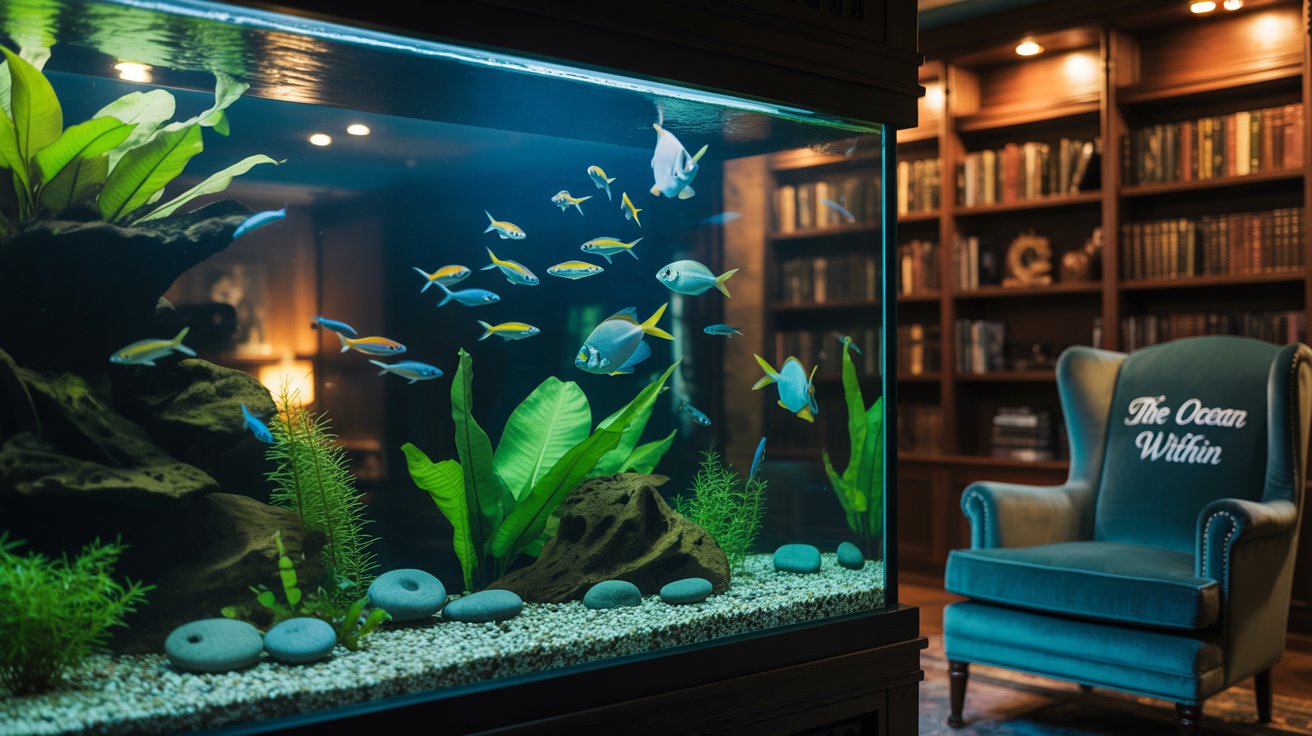Distilled water is an essential component of maintaining a healthy and thriving aquarium. Unlike tap water, which may contain harmful chemicals and impurities, distilled water is free from contaminants and provides a clean and safe environment for your aquatic pets. The purity of distilled water ensures that your fish, plants, and other aquatic life are not exposed to harmful substances that can compromise their health and well-being. Additionally, using distilled water in your aquarium helps to prevent the buildup of algae and other unwanted organisms, as it does not contain the nutrients and minerals that these organisms thrive on. By understanding the importance of using distilled water in your aquarium, you can create a safe and healthy environment for your aquatic pets to thrive.
In addition to providing a clean and safe environment for your aquatic pets, using distilled water in your aquarium can also help to maintain the overall water quality. The purity of distilled water ensures that there are no unwanted substances or impurities that can affect the pH levels and overall balance of the water. This is particularly important for sensitive species of fish and plants that require specific water conditions to thrive. By using distilled water, you can ensure that the water quality in your aquarium remains stable and suitable for your aquatic pets. Overall, understanding the importance of using distilled water in your aquarium is crucial for creating a healthy and thriving environment for your aquatic pets.
Testing the Purity of Distilled Water
Before adding distilled water to your aquarium, it is important to test its purity to ensure that it is free from contaminants and impurities. There are several methods for testing the purity of distilled water, including using a TDS (total dissolved solids) meter or conducting a chemical analysis. A TDS meter measures the concentration of dissolved solids in the water, providing an indication of its purity. A low TDS reading indicates that the water is pure and free from contaminants, making it suitable for use in your aquarium. Additionally, conducting a chemical analysis can provide more detailed information about the composition of the water, including the presence of specific chemicals and impurities. By testing the purity of distilled water before adding it to your aquarium, you can ensure that it meets the necessary standards for maintaining a healthy and thriving aquatic environment.
In addition to testing the purity of distilled water, it is also important to consider its source and storage. Distilled water should be obtained from a reputable supplier or produced using a reliable distillation process to ensure its purity. Additionally, it should be stored in clean and sealed containers to prevent contamination. By taking these precautions, you can ensure that the distilled water used in your aquarium is free from impurities and suitable for maintaining a healthy aquatic environment. Overall, testing the purity of distilled water is an essential step in ensuring that it meets the necessary standards for use in your aquarium.
Adding Essential Minerals and Nutrients to Distilled Water
While distilled water is free from contaminants and impurities, it is also devoid of essential minerals and nutrients that are necessary for maintaining a healthy aquatic environment. As a result, it is important to add these essential elements to distilled water before using it in your aquarium. One way to do this is by using a commercial aquarium mineral supplement, which contains a balanced blend of essential minerals and nutrients that are necessary for the health and well-being of your aquatic pets. These supplements can be added directly to the distilled water according to the manufacturer’s instructions, ensuring that it contains the necessary elements for maintaining a healthy aquatic environment.
Another method for adding essential minerals and nutrients to distilled water is by using natural sources such as sea salt or crushed coral. Sea salt contains a variety of essential minerals and trace elements that are beneficial for aquatic life, while crushed coral can help to buffer the pH levels and provide essential calcium for shell-forming organisms. By incorporating these natural sources into the distilled water, you can ensure that it contains the necessary minerals and nutrients for maintaining a healthy and thriving aquarium. Overall, adding essential minerals and nutrients to distilled water is crucial for creating a balanced and suitable environment for your aquatic pets.
Adjusting pH Levels in Distilled Water
The pH level of the water in your aquarium plays a crucial role in maintaining the health and well-being of your aquatic pets. While distilled water is free from impurities that can affect pH levels, it is also devoid of the buffering capacity that helps to maintain stable pH levels. As a result, it is important to adjust the pH levels of distilled water before adding it to your aquarium. One way to do this is by using a commercial pH buffer, which can help to stabilize the pH levels and prevent fluctuations that can be harmful to sensitive species of fish and plants. These buffers are available in various formulations to suit different types of aquatic environments, making it easy to find one that is suitable for your aquarium.
In addition to using commercial pH buffers, you can also adjust the pH levels of distilled water by using natural methods such as adding driftwood or peat moss. These natural materials release tannins and other compounds that can help to lower the pH levels of the water, making it suitable for species that require acidic conditions. Additionally, adding crushed coral or limestone can help to raise the pH levels of the water, providing a suitable environment for species that require alkaline conditions. By adjusting the pH levels of distilled water before adding it to your aquarium, you can ensure that it meets the necessary standards for maintaining a healthy and thriving aquatic environment.

Dechlorinating and Detoxifying Distilled Water
While distilled water is free from chlorine and other harmful chemicals found in tap water, it is still important to dechlorinate and detoxify it before adding it to your aquarium. This is because chlorine can be introduced during the distillation process or through contamination during storage, making it necessary to remove any potential traces before using the water in your aquarium. One way to dechlorinate and detoxify distilled water is by using a commercial dechlorinator, which neutralizes chlorine and other harmful chemicals without affecting the overall composition of the water. These dechlorinators are available in various formulations to suit different types of aquatic environments, making it easy to find one that is suitable for your aquarium.
In addition to using commercial dechlorinators, you can also dechlorinate and detoxify distilled water by allowing it to sit for at least 24 hours before adding it to your aquarium. This allows any potential traces of chlorine or other harmful chemicals to dissipate naturally, ensuring that the water is safe for your aquatic pets. Additionally, using activated carbon filtration can help to remove any remaining traces of contaminants from the distilled water, providing an extra layer of protection for your aquarium. By dechlorinating and detoxifying distilled water before adding it to your aquarium, you can ensure that it meets the necessary standards for maintaining a healthy and thriving aquatic environment.
Monitoring Water Quality in Your Aquarium
Once you have added distilled water to your aquarium, it is important to monitor its quality on a regular basis to ensure that it remains suitable for your aquatic pets. This includes testing the pH levels, ammonia levels, nitrite levels, nitrate levels, and other parameters that can affect the health and well-being of your fish, plants, and other aquatic life. By monitoring these parameters regularly, you can identify any potential issues or imbalances in the water quality and take appropriate measures to address them before they become harmful to your aquatic pets.
In addition to testing specific parameters, it is also important to observe the behavior and appearance of your aquatic pets as an indicator of water quality. Changes in behavior such as increased aggression or lethargy can be a sign of poor water quality, while changes in appearance such as faded colors or fin damage can also indicate potential issues with the water. By paying attention to these signs and symptoms, you can identify any potential issues with the water quality and take appropriate measures to address them before they become harmful to your aquatic pets. Overall, monitoring water quality in your aquarium is crucial for maintaining a healthy and thriving environment for your aquatic pets.
Tips for Maintaining Proper Water Treatment in Your Aquarium
In addition to testing and monitoring water quality, there are several tips for maintaining proper water treatment in your aquarium. One tip is to perform regular water changes to remove any accumulated waste and replenish essential minerals and nutrients that may have been depleted over time. This helps to maintain stable water quality and prevent imbalances that can be harmful to your aquatic pets. Another tip is to use a reliable filtration system that provides mechanical, biological, and chemical filtration to remove waste and impurities from the water. This helps to maintain clean and healthy water conditions for your aquatic pets.
Additionally, it is important to avoid overfeeding your fish and other aquatic pets, as excess food can lead to increased waste production and poor water quality. By feeding your aquatic pets sparingly and removing any uneaten food from the tank, you can help to maintain clean and healthy water conditions. It is also important to avoid overcrowding your aquarium with too many fish or other aquatic pets, as this can lead to increased waste production and poor water quality. By maintaining proper stocking levels, you can ensure that the filtration system is able to effectively remove waste from the water without becoming overwhelmed.
Overall, maintaining proper water treatment in your aquarium is crucial for creating a healthy and thriving environment for your aquatic pets. By following these tips and taking appropriate measures to test, monitor, and maintain water quality, you can ensure that your fish, plants, and other aquatic life remain healthy and happy in their aquatic home.



